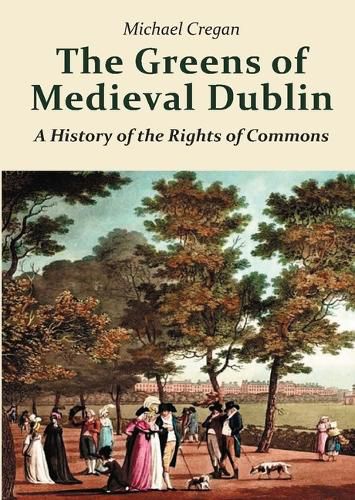Readings Newsletter
Become a Readings Member to make your shopping experience even easier.
Sign in or sign up for free!
You’re not far away from qualifying for FREE standard shipping within Australia
You’ve qualified for FREE standard shipping within Australia
The cart is loading…






Greens or commons in Dublin were important open public spaces in the medieval and early modern periods. They enclosed the town in what would now be termed a greenbelt, but despite their economic and social importance they have received relatively little attention from historians.
The Greens of Medieval Dublin narrates the history of the five principal medieval Greens - St. Stephen's Green, Hoggen (College) Green, The Staine, Abbey Green and Oxmanton Green - as well as Fair Green, adjoining Dublin Castle and Kilmainham, and numerous commons in the town's hinterland.
Michael Cregan describes their primary use for the grazing of draft animals, as well as for recreation, play, seasonal celebrations and military training, and explains how significant population growth led to their demise by the beginning of the nineteenth century. The need for land was a crucial factor, as was the Enlightenment ideology of Improvement, which emphasized transforming crooked alleys into straight streets and a preference for rectangular squares. The aspiration was to transform Dublin into a beautiful city.
Ironically, the loss of the Greens meant that this improved Dublin was seriously lacking in open spaces. Today, there is an awareness that carefully planned public areas greatly contribute to the attractiveness of cities. Indeed, Dublin's Greens may have been 'ahead of the times' by offering a wide variety of over-lapping functions in an unmanicured landscape.
$9.00 standard shipping within Australia
FREE standard shipping within Australia for orders over $100.00
Express & International shipping calculated at checkout
Greens or commons in Dublin were important open public spaces in the medieval and early modern periods. They enclosed the town in what would now be termed a greenbelt, but despite their economic and social importance they have received relatively little attention from historians.
The Greens of Medieval Dublin narrates the history of the five principal medieval Greens - St. Stephen's Green, Hoggen (College) Green, The Staine, Abbey Green and Oxmanton Green - as well as Fair Green, adjoining Dublin Castle and Kilmainham, and numerous commons in the town's hinterland.
Michael Cregan describes their primary use for the grazing of draft animals, as well as for recreation, play, seasonal celebrations and military training, and explains how significant population growth led to their demise by the beginning of the nineteenth century. The need for land was a crucial factor, as was the Enlightenment ideology of Improvement, which emphasized transforming crooked alleys into straight streets and a preference for rectangular squares. The aspiration was to transform Dublin into a beautiful city.
Ironically, the loss of the Greens meant that this improved Dublin was seriously lacking in open spaces. Today, there is an awareness that carefully planned public areas greatly contribute to the attractiveness of cities. Indeed, Dublin's Greens may have been 'ahead of the times' by offering a wide variety of over-lapping functions in an unmanicured landscape.